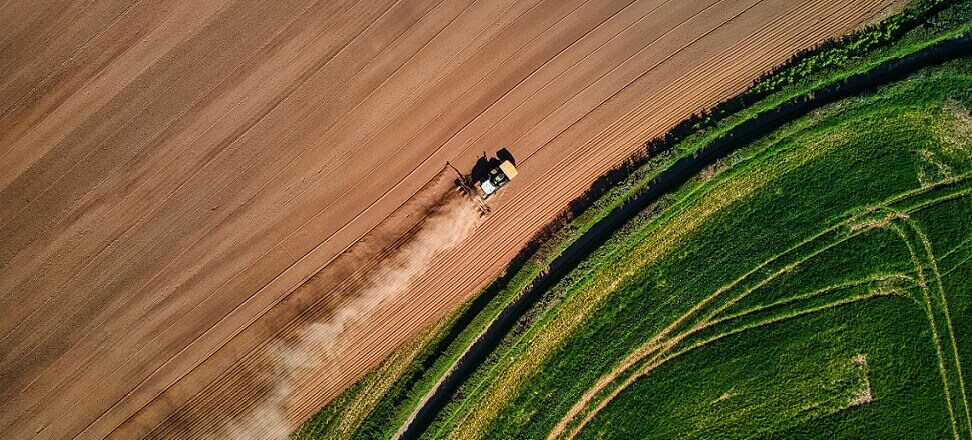Continuing climate change poses a serious threat to global food security. From the condition of crops, to the profitability of farms, to the operation of financial institutions, all depend on increasingly capricious weather. Researchers at the University of California, San Diego’s School of Global Policy and Strategy set out to develop a tool that would allow individual countries to estimate climate risk in agriculture and better prepare for an uncertain future.
Brazilian case study
The U.S. researchers based their empirical model on the example of Brazil, a country that depends on agriculture to a significant degree and is also located in a zone that is extremely heavily affected by weather anomalies. The first phase of the project analyzed historical temperature and precipitation measurements from 1991-2020. The baseline values of both variables and the trends observed over three decades were taken as key data. Based on these, the deviation of seasonal extremes from the long-run norm was calculated and climate risks for 2040-2069 were estimated.
From the above analysis, the researchers drew important lessons for the future. According to the most likely scenario, in the middle of the 21st century. The northeastern part of Brazil will suffer from unusually heavy winter rainfall and much drier summer months than at present. These seasonal anomalies are projected after 2050. will be quite dramatic. In contrast, in the center of the country, where the weather is and will continue to be more stable, the average air temperature is expected to rise significantly. For agriculture, this means the need to change the structure of crops and switch to more heat-tolerant species.
Relationship between climate and agricultural production and profits
The second phase of the analysis by the California researchers looked at profits from agricultural production. Annual data on productivity per hectare and related revenues earned by 5340 Brazilian local governments were compared with historical measurements of seasonal temperature and rainfall.
Three crop types, corn, soybeans and sorghum, with similar growing seasons but different marketing dynamics, were used in the model estimating climate risk. Brazil is the world’s largest producer of soybeans. It is primarily an export commodity for her. Corn is grown for domestic consumption and export, while sorghum is used as animal feed. For each of these species, the researchers prepared a separate model predicting the level of productivity and gains as a function of temperature and rainfall, also taking into account the scenario of thermal and hydrological shocks at the national, regional and local levels.
What did it turn out to be? Recorded weather changes in Brazil over the past 30 years explain most of the variation in agricultural production and profits achieved. However, the relationship is stronger for productivity than for profits, and varies for each of the crops analyzed, indicating that factors other than weather affect the value of the market. At the same time, a real potential for adaptation to climate change has been observed – as temperatures rise, cooler, southern areas can take advantage of the prolonged summer for catch crops.
As a further step in the analysis, the researchers decided to examine how the climate risk described earlier exposes financial institutions that support farmers with business loans. In this aspect, data from the Bahia region, where large, modern grain and fruit farms and small, local farmers without advanced technology coexist, served as study material. It turned out that an increase in the average temperature in the region is highly correlated with the likelihood of defaulting on loan repayments. An in-depth analysis of the interdependencies also revealed interesting nuances that could prove to be an important guide in planning agricultural financing strategies in the era of climate change.
How to predict climate risk – a new statistical approach
The goal of the model developed by California scientists is to gain an in-depth understanding of the impact of weather changes on the potential future of agriculture. The data collected earlier was therefore used to create likely trends in productivity, profits and loan defaults for future years. The California method makes it possible to prepare such a forecast for different types of crops and different levels – from local to national.
In the case of Brazil, the model for the next 25 years predicts that deviations from the normal level of output and profits will be greater than in the past 30 years, although average values will not change dramatically. At least one year in the next quarter century will bring markedly lower yields and revenues. Instead, defaults will consistently rise, which is important news for the domestic banking sector.
We need to build global resilience
Agriculture is a key link between climate change and the well-being of society – in no other sector do changes in weather affect the economics of production, and thus food security, so clearly. These relationships, however, as it turns out, are not linear. Understanding how climate risk affects the various elements of the agricultural economy, including the sources of funding for its operations, is key to developing adaptation strategies.
According to the authors of the model in question, this innovative approach can improve the assessment of the adaptive potential of countries and regions in various ways. For example, it provides an opportunity to introduce an additional variable in the form of technology. Climate risk in Brazil can generally be reduced by investing in retention, which will reduce farmers’ vulnerability to changes in rainfall. From data obtained from the 2017 Brazilian Agricultural Census. shows that more than 1 million tank cars are already installed on farms, 90 percent of them. In semi-arid areas. The California model can be used to estimate how such technological advancements reduce climate risk to agriculture as a function of changes in precipitation and temperatures.
As a result, different types of technological innovations can be analyzed for their potential to reduce the agricultural sector’s vulnerability to forecasted weather changes. National and local governments may have to look for solutions other than tankers to decouple from climate risk. Especially since it is a technology that protects against drought in summer, but does not protect against the projected increase in precipitation in winter. The empirical model proposed by the San Diego researchers proves the high utility of historical meteorological data, which, thanks to statistical tools, becomes the basis for predicting the most likely scenarios. And there is no doubt that the climate will surprise us more and more in the future.
For politicians, representatives of the financial sector and farmers themselves, obtaining detailed and integrated climate information should be a priority today. By drawing conclusions about historical losses and their weather patterns, we can make important recommendations for the future. According to the model’s authors, this is particularly important for banks, giving them the ability to better assess which borrowers will benefit most from access to loans and other financial services. Statistics can thus become a link between meteorology and economics.
Photo. main: Red Zeppelin/Unspalsh

 Polski
Polski






